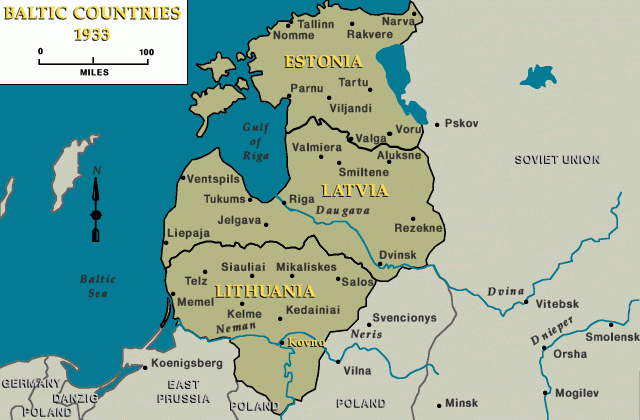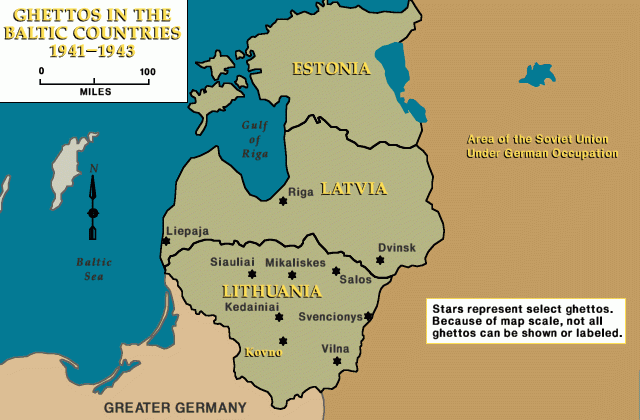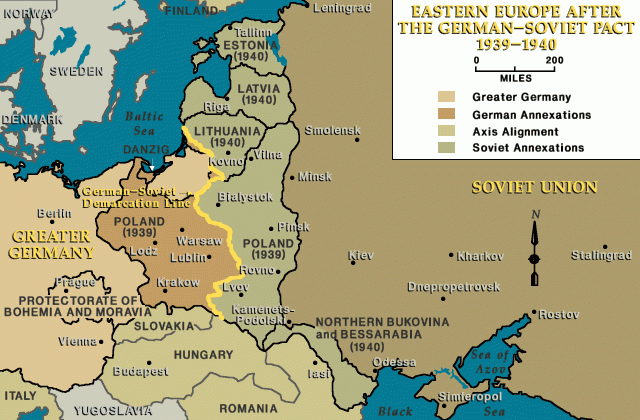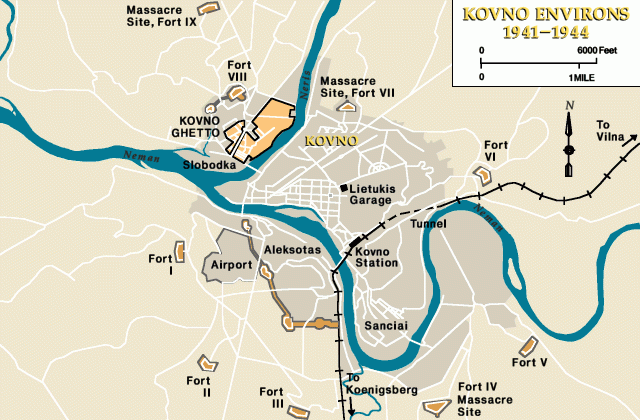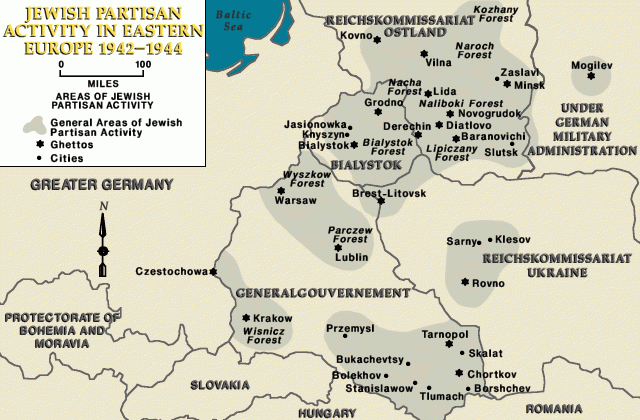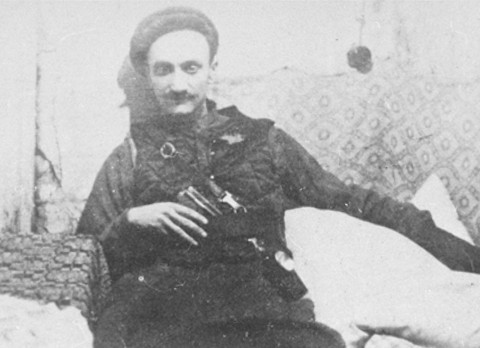
Chaim Yelin
Chaim Yelin was well-known among Kovno's Jews both as a promising Yiddish writer and as leader of the ghetto's underground resistance movement against the Germans. During the German occupation, Yelin led the Communist underground until his capture and murder in the spring of 1944.
Early Years
Chaim Yelin was born in 1912 in Vilkija, a small Lithuanian town near Kovno. He grew up in a home filled with intellectual discussion. His father Eliezer (Lazar) was a specialist in Hebrew studies, as was his mother, Esther-Riebel. Eliezer founded in 1921 and directed a library in Kovno for the Culture League, which was later called "Lovers of Knowledge." Chaim and his brother Meir helped run the library and participated in discussions about Jewish and secular literature and politics.
in 1932 Yelin completed his studies at Kovno's Reali Hebrew Gymnasium. A few years later he received a degree in economics at the city's University of Lithuania. As a student he became interested in drama and participated in student theatricals. He alo established a literary reputation as a result of stories, articles, and dramas he published in the daily Folksblat and in other Yiddish journals. He represented Lithuania in 1937 at an international conference in Paris on Jewish culture.
Occupation of Lithuania
Exhibiting left-wing tendencies, Yelin was eager to support the Soviet regime when it occupied Lithuania in 1940–41. But his employment in the new government's printing office and his activity in the Communist Party councils and institutions exposed him as a double target, as a Jew and a Communist sympathizer, when the Germans occupied Lithuania and ghettoized Jews in the summer of 1941. Eventually the Germans captured him and forced him into the Kovno ghetto.
Resistance in the Kovno Ghetto
Yelin continued to write in the ghetto, mainly during 1941. He developed ironic and semi-humorous vignettes about work brigades, German plunder, and other aspects of ghetto life. His main concern, however, was political. He assumed a new identity, complete with a mustache and pseudonym (Kadison). He became the leader of the ghetto's Communist resistance movement. Shortly after the mass executions of Jews in the summer and fall of 1941, Yelin and some close friends formed the Activists Union (Aktivistn Farband in Yiddish), also known as the Anti-Fascist Organization.
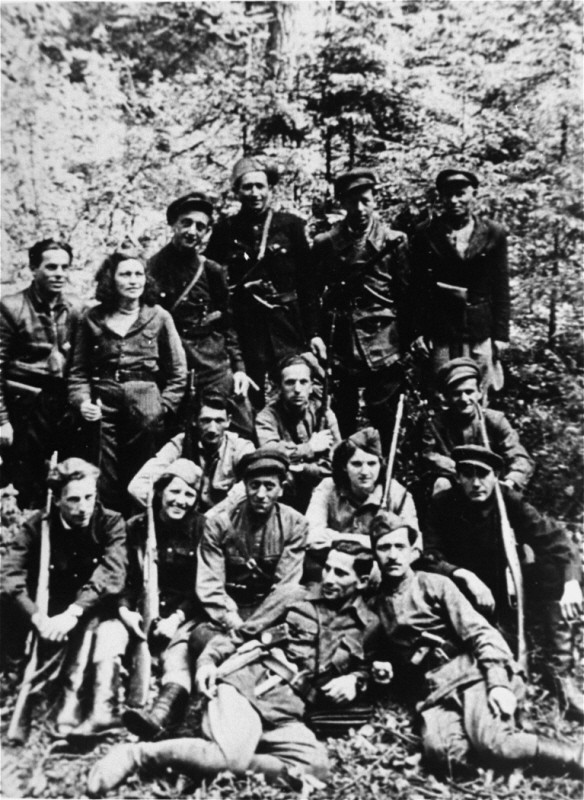
Believing that the ghetto's survival was dependent on the defeat of Germany by the Soviet army and partisans outside the ghetto's perimeter, Yelin found ways to evade gate guards to meet with members of the Communist underground in the city and in the Rudniki (Rudninkai) Forest, the closest partisan base to Kovno. He also met with sympathetic Lithuanians, including the physician Elena Kutorgiene. Yelin used these contacts to smuggle ammunition and arms into the ghetto and gather information. Kutorgiene also offered sanctuary for Yelin's ghetto writings.
Resistance Increases
With the conversion of the ghetto into a concentration camp and the news of the liquidation of the Vilna ghetto in September and October 1943, membership in resistance groups increased. Already during the summer, members of Matzok, the ghetto's largest Zionist resistance organization, approached Yelin about the possibilities of joining forces. Accelerating underground activity led to the consolidation of Zionist groups, who were committed to Jewish self-defense, and Communists into one group called "The Organization" or the "Jewish General Fighting Organization" (Yidishe Algemeyne Kamfs Organizatsie").
Yelin's charisma, organizational skills, and outside contacts with the non-Jewish underground movements earned him widespread support and popularity across ideological lines as the de facto leader of "The Organization." The Zionists concentrated on getting help from ghetto authorities; the Communists concentrated on getting help from outside the ghetto, contacting partisans and obtaining arms for fighting both inside and outside the ghetto.
In early fall 1943, Yelin received a mysterious note addressed to "the Jewish author Chaim Yelin" and signed "G." The note came from Gessia Glezer, alias Albina. Glezer was a Soviet Jewish paratrooper who often visited Kovno and stayed with Kutorgiene. She came this time with a proposal to send Jewish partisans to join Soviet partisan units in the Augustow (Augustavas) Forest south of Kovno.
The Augustow Plan proved to be a disaster. Traveling by foot, almost all of the 100-plus Jewish fighters were captured. The two who arrived safely learned that there had been no partisan activity there. Yelin quickly established new contacts and sent more than 300 Jewish youths, many by truck, to the Soviet partisan bases of the Rudniki Forest.
Capture
On April 6, 1944, while Yelin was in central Kovno trying to arrange another transport of Jewish partisans, the Gestapo captured him following an exchange of gunfire on the city's main road. He was confined, interrogated, and tortured.
Concerned about the ghetto's possible collective punishment on his account, Yelin insisted that he was a Russian paratrooper named Garmen. Yelin was killed sometime in early May. With the loss of his leadership after his arrest and disappearance, armed resistance in the Kovno ghetto eventually fell apart.
Critical Thinking Questions
Why did the Nazis resort to a system of ghettos?
Besides armed resistance, in what other ways did the Jews resist the Nazis while forced to live in the ghettos?
What pressures and motivations may have influenced Yelin's decisions and actions?
Are these factors unique to this history or universal?
How can societies, communities, and individuals reinforce and strengthen the willingness to stand up for others?


